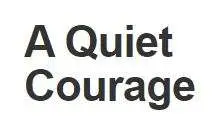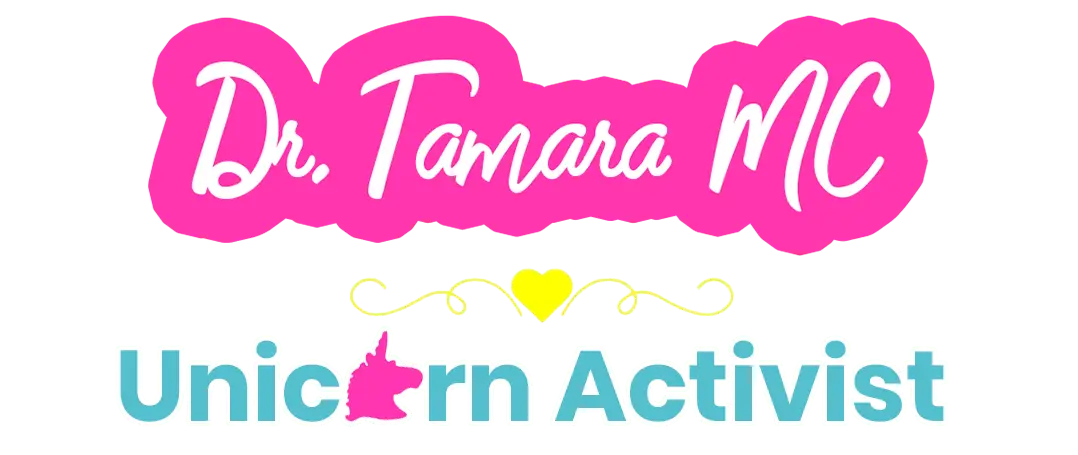325 WAYS TO KNOW IF YOUR IN A CULT
This extensive list will be divided into several sections, each focusing on different aspects of cult characteristics, such as leadership style, group dynamics, control mechanisms, and more.
Leadership Characteristics
1. Charismatic Leader
The group is led by a charismatic leader who demands loyalty and obedience.
2. Absolute Authority
The leader has absolute authority over the group and makes decisions without consultation.
3. No Accountability
The leader is not accountable to any authorities or governance structures outside the cult.
4. Messiah Complex
The leader often claims to have a special mission or powers.
5. Above the Law Mentality
The leader teaches that they are above secular law.
6. Personal Gain
The leader uses the group for personal gain, such as wealth, power, or sexual gratification.
7. Unquestionable Doctrine
The leader’s teachings are seen as ultimate truth and cannot be questioned.
8. Isolation from Former Life
The leader encourages severing ties with family and friends outside the group.
Group Dynamics
9. Us vs. Them Mentality
A strong group identity is fostered, distinguishing members from non-members negatively.
10. Elite Status
Members believe they are part of an elite or special group.
11. Secretive Behavior
Group activities and teachings are kept hidden from outsiders.
12. No Exit Policy
Leaving the group is discouraged, and those who leave are shunned or punished.
13. Peer Pressure
There is significant peer pressure to conform to the group’s norms.
14. Fear of Outsiders
Members are taught to fear the outside world, viewing it as corrupt or dangerous.
15. Groupthink
Critical thinking is discouraged, and group consensus is enforced.
16. Isolation
Members often live in a controlled environment isolated from the outside world.
Control Mechanisms
17. Behavior Control
Extensive rules govern members’ behavior, often including personal details like diet and attire.
18. Information Control
Access to external sources of information is restricted.
19. Thought Control
Members are taught to police their own thoughts to align with group teachings.
20. Emotional Control
Fear, guilt, and shame are used as tools to control members.
21. Love Bombing
New members are showered with attention and praise.
22. Confession Sessions
Members are encouraged or forced to confess sins or thoughts that deviate from group norms.
23. Time Control
Members’ schedules are heavily controlled, leaving little time for reflection or interaction with outsiders.
24. Financial Exploitation
Members are often required to donate a significant portion of their income or assets.
Indoctrination Techniques
25. Repetitive Teaching
Group doctrines are taught repeatedly in intensive sessions.
26. Induced Dependency
The group creates a dependency on the group and leader for emotional and spiritual support.
27. Fear Tactics
Fear of the outside world, spiritual retribution, or the apocalypse is used to keep members loyal.
28. Salvation Promise
The group promises spiritual salvation or enlightenment exclusively to its members.
29. Miracle Claims
Claims of miracles or divine intervention are common and used to reinforce faith in the leader.
30. End Justifies Means
Unethical behaviors are justified by the supposed higher purpose of the group.
31. Sacred Science
The group’s beliefs are presented as scientifically perfect or profoundly insightful.
32. Loaded Language
Specialized language or jargon is used to reinforce group identity and confuse outsiders.
Personal Impact
33. Loss of Individuality
Members are encouraged to conform completely to the group’s norms at the expense of their own identity.
34. High Emotional Cost
Leaving the group or questioning its teachings is associated with intense fear, guilt, or existential threat.
35. Personal Sacrifices
Members are expected to make significant personal sacrifices for the group, including financial, relational, and career-related.
36. Changed Priorities
Members prioritize group activities and goals over personal or family commitments.
37. Health Neglect
Physical and mental health may be neglected due to group practices or teachings.
38. Black and White Thinking
The world is viewed in an absolute dichotomy of good (the group) and evil (everything else).
39. Alienation from Family
Family relationships suffer or are severed due to the group’s influence.
40. Identity Crisis
Members may experience a crisis of identity if they leave the group.
Social Structures
41. Rigid Hierarchy
The group has a clearly defined hierarchy where obedience flows upwards.
42. Surveillance
Members are monitored, and their activities reported to leadership.
43. Snitch Culture
Members are encouraged to report on each other’s failings.
44. Punishment for Dissent
Questioning, doubt, or dissent are punished or met with aggressive correction.
45. Limited Social Circle
Social interactions are mostly limited to other group members.
46. Controlled Relationships
Romantic relationships must be approved by the group’s leadership.
47. Child Indoctrination
Children are raised with the group’s ideologies, often isolated from outside educational or social opportunities.
48. Gender Roles
Strict gender roles may be enforced, with women often subservient to men.
External Behaviors
49. Uniform Dress
Members may be required to dress in a uniform way.
50. Recruitment Focus
A significant amount of time is dedicated to recruiting new members.
51. Public Evangelism
Members actively engage in public preaching or evangelism.
52. Propaganda Production
Members produce materials that promote the group’s views.
53. Demonization of Ex-Members
Those who leave the group are demonized and presented as cautionary tales.
54. Legal Troubles
The group often has legal issues or conflicts with law enforcement.
55. Scripted Interaction
Interactions with outsiders are scripted or rehearsed, based on group teachings.
56. Hostility to Media
The group is hostile to journalists or media inquiries.
Psychological Effects
57. Cognitive Dissonance
Members are forced to rationalize inconsistencies between reality and group teachings.
58. Hypnosis Techniques
Techniques that alter mental states are used in rituals or teaching sessions.
59. Paranoia
A sense of paranoia or conspiracy thinking is cultivated about the outside world.
60. Reality Distortion
The group creates its own version of reality to fit its teachings.
61. Dual Persona
Members often display a different persona inside and outside the group.
62. Emotional Overload
Frequent intense emotional experiences or crises are common, keeping members disoriented.
63. Dependency Creation
Members become dependent on the group for emotional support and validation.
64. Exhaustion
Sleep deprivation or relentless activity schedules keep members tired and compliant.
Psychological Tactics
65. Reinforcement of Dependence
The group reinforces members’ dependence on it for knowledge, wisdom, and connection.
66. Emotional Rollercoaster
Members experience extreme emotional highs and lows, often driven by group activities and leader’s approval or disapproval.
67. Confession and Guilt
Personal confessions are used to break down individual autonomy and create guilt.
68. Phobia Indoctrination
Instilling irrational fears about leaving the group or questioning its beliefs.
69. Mystical Manipulation:
Arranging events to appear as spontaneous or divine to manipulate members.
70. Chanting and Meditative States
Use of repetitive singing, chanting, or meditation to suppress dissenting thoughts and emotions.
71. Sleep Manipulation
Manipulating sleep patterns to induce disorientation and susceptibility to indoctrination.
72. Language Restriction
Restricting the use of normal language to limit members’ ability to articulate criticisms.
Long-term Impacts
73. Lost Years
Members often feel they have lost years of their lives to the group.
74. Broken Families
Family estrangement is common, as members are often encouraged to cut ties with non-believing relatives.
75. Financial Ruin
Many leave the group financially destitute due to exploitation or required donations.
76. Educational Setbacks
Younger members often experience educational neglect or delays.
77. Psychological Disorders:
Long-term members may suffer from anxiety, depression, or PTSD after leaving.
78. Social Skills Decay
Difficulty in relating to non-members due to lack of social interaction outside the group.
79. Identity Reconstruction
Former members often struggle to rebuild their identity and sense of self outside the group.
80. Legal Issues
Members may face legal repercussions for actions taken while in the group.
Subtle Signs
81. Sudden Personality Changes
Drastic changes in personality after joining the group.
82. Secretive About Activities
Being secretive or vague about group activities when asked.
83. Dismissive of Criticism
Quick to dismiss or react negatively to criticism of the group or its leader.
84. Uncharacteristic Optimism
Displaying an uncharacteristically high level of optimism about the group and its goals.
85. Ritual Significance
Regular participation in group rituals that seem excessive or central to one’s life.
86. In-group Language
Using new, unusual terms or phrases that are specific to the group.
87. Dramatic Life Overhaul
Sudden and complete overhaul of lifestyle after joining.
88. Avoidance of Former Friends
Deliberately avoiding contact with former friends and acquaintances.
Final Indicators
89. Public Persona vs. Private Reality
The group portrays a perfect public persona that conflicts with the private experiences of members.
90. Promises of Revolution:
Promises that the group will lead a revolution or significant change in society.
91. Apocalyptic Warnings
Frequent warnings about the end of the world or a coming apocalypse.
92. Sacred Texts
Heavy reliance on a particular set of texts or documents, often authored by the leader.
93. Deification of Leader
The leader is treated as a god-like figure whose words are above reproach.
94. Hierarchical Isolation
Senior members are isolated from general members, interacting only through structured channels.
95. Purity Tests
Members must undergo various tests to prove their loyalty or purity to the group.
96. Collective Living
Encouraging or requiring members to live in communal settings controlled by the group.
97. Dress Codes
Strict dress codes that members are required to follow, often to signify membership and conformity.
98. Anti-Social Laws
The group has its own set of laws or rules that are anti-social or conflict with societal norms.
99. Moral Relativism
Moral standards that apply to the outside world do not apply within the group.
100. All-Consuming Commitment
The group requires an all-consuming commitment that dominates all aspects of life.
Additional Subtle Signs
101. Instant Community
The group offers an instant sense of community and belonging that feels overwhelming or too good to be true.
102. Unverifiable Claims
The group frequently makes grandiose claims that cannot be verified through external sources.
103. Public vs. Private Discrepancies
A noticeable difference between how the group behaves in public and what happens in private meetings.
104. Overlapping Identities:
Group identity overlaps significantly with individual identity to the extent that members lose a sense of self.
105. Cult of Confession
ontinuous pressure to share deeply personal or embarrassing details publicly within the group.
Community Interactions
106. Community Exploitation
The group exploits the local community or its resources without giving back.
107. Aggressive Conversion Efforts
Aggressive efforts to convert others, sometimes using unethical means such as deception or coercion.
108. Isolation Exercises
Activities designed to physically or emotionally isolate members from the outside world.
109. Ritual Intensity
Participation in rituals that are intense or extreme, often designed to test loyalty or submissiveness.
110. Community Alienation
The group actively alienates members from the local community or society at large.
Warning Signs Related to Personal Well-being
111. Emotional Exhaustion
Members frequently feel emotionally drained or burnt out from group activities.
112. Identity Loss
Significant loss of personal identity, with the group identity taking precedence.
113. Health Deterioration
Noticeable deterioration in physical or mental health due to group practices or neglect.
113. Health Deterioration
Persistent fear of retribution from the group or its leader for thinking about leaving or criticizing the group.
115. Monitored Communication
Communications are monitored, and private conversations are discouraged or forbidden.
116. Compulsory Services
Compulsion to participate in group services, activities, or rituals, regardless of personal willingness or health.
117. Polarized Thinking
Encouraging polarized thinking (all good or all bad) about the world and people outside the group.
118. Loss of Financial Control
Complete or partial loss of control over personal finances, often justified by group doctrines.
119. Blind Obedience
Encouraged or required blind obedience to the leader or group rules without questioning.
120. Crisis Creation
Manufacturing crises that keep members too busy or anxious to question or leave the group.
121. Pseudoscience
Reliance on pseudoscientific methods or unproven practices for health, wellness, or lifestyle decisions.
122. Exaggeration of Threats
Exaggerating threats (either spiritual or physical) from the outside world to keep members committed and compliant.
123. Totalitarian Control
The group exhibits signs of wanting to control every aspect of members’ lives, including personal decisions, relationships, and living arrangements.
124. Savior Mentality
Members are led to believe that they are part of a select group destined to save the world or bring about significant change.
125. Inescapable Commitments
Members find it exceedingly difficult or impossible to leave due to emotional, financial, or social pressures.
Psychological Impacts
126. Cognitive Overload
Constant bombardment with complex information, rules, or doctrines that keeps members confused and compliant.
127. Dissociation
Members show signs of dissociation or detachment from reality as a coping mechanism for intense group pressures.
128. Rewriting History
The group frequently rewrites its own history or members’ personal histories to align with its narrative.
129. Paradoxical Rules
Members are subjected to paradoxical rules or expectations that are impossible to fulfill, creating perpetual feelings of inadequacy.
130. Selective Memory
Encouragement to remember only positive encounters within the group and forget or rationalize negative experiences.
Psychological Impacts
126. Cognitive Overload
Constant bombardment with complex information, rules, or doctrines that keeps members confused and compliant.
127. Dissociation
Members show signs of dissociation or detachment from reality as a coping mechanism for intense group pressures.
128. Rewriting History
The group frequently rewrites its own history or members’ personal histories to align with its narrative.
129. Paradoxical Rules
Members are subjected to paradoxical rules or expectations that are impossible to fulfill, creating perpetual feelings of inadequacy.
130. Selective Memory
Encouragement to remember only positive encounters within the group and forget or rationalize negative experiences.
Manipulation Tactics
131. Gaslighting
Members are regularly subjected to gaslighting, making them doubt their own memory, perception, or sanity.
132. Double Bind
Members often face double-bind situations where they are criticized or punished no matter what they choose.
133. Conditional Love
Love and acceptance are conditional upon performance, obedience, or compliance with group norms.
134. Splitting
Encouraging a psychological division between the perceived purity of the group and the corrupt nature of the outside world.
135. Catastrophizing
Overemphasizing potential catastrophes that could occur if one leaves the group or fails to comply with its rules.
Broader Consequences
136. Cultural Appropriation
The group appropriates elements from different cultures without understanding or respecting their true significance.
137. Ecological Impact
Engaging in practices that negatively impact the environment, often ignored due to the group’s other focuses.
138. Economic Insularity
Creation of an insular economy where members are encouraged or required to transact only within the group.
139. Political Manipulation
Members are manipulated into supporting or participating in political activities that align with the leader’s agenda.
140. Weaponizing Information
Using personal information shared within the group to manipulate or control members.
Subtle Behavioral Changes
141. Hyperactivity or Lethargy
Members may exhibit periods of hyperactivity or, conversely, lethargy, depending on the group’s current focus or activities.
142. Overzealous Commitment
Displaying an overzealous commitment to group tasks, often at the expense of personal health or well-being.
143. Ritual Obsession
An obsession with maintaining ritual purity or exactness, often to an extreme degree.
144. Symbolic Dress
Members might adopt symbolic clothing or symbols that signify deeper meanings within the group.
145. Language Shifts
Adopting a new lexicon or manner of speech that aligns with group doctrines and isolates them from non-members.
Subtle Social Dynamics
146. Cliques and In-groups
Formation of cliques or in-groups within the cult that possess more knowledge or power.
147. Social Stratification
Clear social stratification based on adherence to group norms, loyalty to the leader, or other criteria.
148. Erosion of Boundaries
Personal boundaries are eroded over time, making members more susceptible to abuse or exploitation.
149. Shared Delusions
Group-wide acceptance of delusions or disproven beliefs, especially regarding the leader or group’s destiny.
150. Enforced Homogeneity
Efforts to enforce homogeneity in thought, belief, and behavior among all members.
Emotional Manipulation
151. Emotional Cycling
The group uses a cycle of punishment and reward to create an emotional roller coaster, keeping members disoriented and dependent.
152. Guilt Inducement
Using guilt as a tool to control members by making them feel perpetually inadequate or sinful.
153. Public Shaming
Utilizing public shaming or humiliation as a method to enforce conformity and discourage dissent.
154. Intense Emotional Conflicts
Facilitating situations where members experience intense emotional conflicts, forcing reliance on the group for resolution.
155. Artificial Harmony
Enforcing a superficial sense of harmony that masks underlying fear, resentment, or compliance.
Social Control
156. Role Assignment
Assigning members specific roles that reinforce the group’s hierarchy and control individual behavior.
157. Limited Privacy
Encroaching on personal privacy, making it difficult for members to have thoughts or experiences independent of group influence.
158. Information Filtering
Filtering all external information, and presenting only what reinforces the group’s doctrines.
159. Severance of External Ties
Actively encouraging members to sever ties with external influences, including friends, family, and societal institutions.
160. Ritualized Confessions
Encouraging ritualized confessions of sins or doubts, which are then used to publicly shame or re-indoctrinate the individual.
Extended Influence Tactics
161. Legacy Indoctrination
Targeting members’ children for early and intensive indoctrination to ensure generational continuity.
162. Crisis Manufacturing
Creating or exacerbating crises that make the group appear necessary or salvationary.
163. Endowment of Special Purpose
Convincing members that they have a special purpose or mission that can only be fulfilled within the group.
164. Exclusivity of Knowledge
Claiming that the group has access to exclusive knowledge or truths unavailable or unrecognized by the outside world.
165. Persecution Complex
Instilling a belief in members that the group is constantly persecuted, justifying defensive or aggressive actions.
Erosion of Personal Agency
166. Decision Outsourcing
Encouraging members to outsource personal decision-making to the group or its leaders, fostering dependency.
167. Reality Replacement
Replacing members’ perceptions of reality with the group’s constructed narrative.
168. Moral Relativity
Encouraging a moral relativity that justifies actions that are typically considered unethical by societal standards.
169. Sanctification of Suffering
Glorifying suffering, hardship, or sacrifice as necessary for spiritual growth or group progression.
170. Suppression of Dissent
Systematically suppressing dissent through social ostracism, psychological manipulation, or physical retribution.
Advanced Control Mechanisms
171. Mystification of Leadership
Surrounding the leader with a mystique that includes myths, legends, and supernatural claims about their origins or powers.
172. Time Monopolization
Structuring members’ time to monopolize it with group activities, leaving little room for independent thought or external relationships.
173. Fear of External World
Amplifying fears of the external world to enhance dependency on the group’s protection or guidance.
174. Cognitive Reconstruction
Employing techniques aimed at reconstructing members’ cognitive processes to align with group ideologies.
175. Exaggeration of Devotion
Demanding exaggerated forms of devotion or worship, especially towards the leader, that may include physical prostrations or ritualistic chanting.
Control Over Communication
176. Controlled External Communications
Strict rules about how members can communicate with outsiders, often requiring supervision or prior approval.
177. Language Manipulation
Introducing a specialized language that changes common meanings of words to enhance group ideology.
178. Conflicted Messaging
Delivering messages that conflict, causing confusion and increasing dependency on the group for clarification.
179. Silencing Tactics
Using tactics like gaslighting, redirection, or outright censorship to silence questions or dissent.
180. Group Chanting
Frequent use of chanting or singing group slogans or creeds to reinforce group beliefs and suppress individual thoughts.
Manipulation of Identity
181. Induced Compliance
Forcing members to comply with behaviors that conflict with their personal beliefs, leading to cognitive dissonance.
182. Name Changes
Encouraging or requiring members to change their names as a sign of rebirth into the group.
183. Personal History Denial
Encouraging members to deny or rewrite their personal histories to align better with group narratives.
184. Role-playing Games
Using role-playing activities designed to reinforce the group’s worldview and diminish former identities.
185. Alteration of Appearance
Requiring members to alter their appearance significantly (haircuts, clothing) to mark identity with the group.
Psychological and Social Effects
186. Personality Suppression
Suppressing pre-cult personality traits and promoting a new personality cultivated by group norms.
187. Social Echo Chambers
Creating an environment where members are only exposed to group ideas, reinforcing a social echo chamber.
188. Normalization of Extremes
Normalizing extreme behaviors or beliefs through group reinforcement and leader exemplification.
189. Psychological Isolation
Even when not physically isolated, members feel psychologically isolated from non-members.
190. Devaluation of Outsiders
Systematic devaluation of outsiders, including family members not in the group, to diminish the desire for external contact.
Advanced Behavioral Controls
191. Behavioral Rewards
Implementing a system of rewards for adherence to group behaviors and penalties for non-adherence.
192. Sleep Deprivation
Using sleep deprivation as a means to weaken willpower and enhance susceptibility to indoctrination.
193. Public Performance
Requiring members to perform public acts of allegiance to demonstrate loyalty and suppress personal doubts.
194. High Demand Tasks
Assigning tasks that require high levels of time and energy, reducing opportunities for solitary reflection or external influences.
195. Financial Commitment
Requiring significant financial commitments as demonstrations of loyalty, often leading to financial dependency on the group.
Cultivation of Dependency
196. Induced Dependency
Cultivating dependency on the group for emotional support, social community, and even basic needs like food and shelter.
197. Crisis Inducement
Creating or exacerbating personal crises to make the group indispensable in the members’ eyes.
198. Pathologizing Leaving
Pathologizing the idea of leaving the group as a moral failure or a psychological breakdown.
199. Shared Suffering
Encouraging a sense of shared suffering or martyrdom within the group, which strengthens bonds and loyalty.
200. Eternal Persecution Narrative
Embedding a narrative of eternal persecution that binds the group together against perceived external threats.
Power Dynamics
201. Hierarchical Privileges
Granting privileges based on hierarchy or loyalty, creating a visible divide within the group.
202. Enforced Loyalty Tests
Regularly testing members’ loyalty through difficult, sometimes humiliating tasks.
203. Sanctioned Secrecy
Promoting a culture of secrecy where only certain members are privy to specific information.
204. Selective Enforcement
Applying rules selectively to control or punish members unpredictably.
205. In-group Favoritism
Showing overt favoritism to those who closely follow the leader or ideology, reinforcing power dynamics.
Group Conformity and Compliance
206. Uniform Codes
Constant bombardment with complex information, rules, or doctrines that keeps members confused and compliant.
207. Group Rituals
Members show signs of dissociation or detachment from reality as a coping mechanism for intense group pressures.
208. Peer Surveillance
The group frequently rewrites its own history or members’ personal histories to align with its narrative.
209. Communal Living
Members are subjected to paradoxical rules or expectations that are impossible to fulfill, creating perpetual feelings of inadequacy.
210. Conformity Rewards
Encouragement to remember only positive encounters within the group and forget or rationalize negative experiences.
Environmental Manipulation
211. Controlled Environments
Creating highly controlled environments that limit external influences and promote a specific worldview.
212. Isolation Practices
Isolating members from the external world, both physically and psychologically, to deepen group influence.
213. Staged Events
Organizing events that are staged to appear spontaneous, reinforcing the group’s narratives and beliefs.
214. Manipulated Affections
Manipulating members’ affections towards each other and the group, often redirecting love and loyalty towards the leader.
215. Atmospheric Pressure
Using environmental pressures such as overcrowding, limited privacy, or orchestrated stress to break down resistance.
Narrative Control
216. Mythologizing History
Creating a mythologized version of the group’s history that glorifies its origins and leaders.
217. Apocalyptic Prophecies
Emphasizing apocalyptic or transformative prophecies that keep members in a state of urgency and compliance.
218. Vilification of Defectors
Vilifying those who leave the group as traitors or morally corrupt, deterring defection.
219. Rewriting Personal Stories
Encouraging members to rewrite their personal stories to align with group ideologies.
220. Demonizing Doubt
Framing doubt as a dangerous weakness and promoting an environment where questioning is seen as betrayal.
Overarching Control Mechanisms
221. Continuous Busywork
Keeping members continuously busy with tasks, leaving no time for critical thinking or external interaction.
222. Indoctrination Sessions
Holding frequent indoctrination sessions that reinforce the group’s doctrines and leader’s teachings.
223. Fear of the Unknown
Instilling a fear of the unknown, emphasizing that safety and truth can only be found within the group.
224. Spiritual Entitlements
Offering supposed spiritual entitlements or salvation that can only be achieved through group membership.
225. Totalitarian Transparency
Demanding that all aspects of a member’s life be transparent to the group, eliminating personal privacy.
Advanced Indoctrination Techniques
226. Reinvention of Language
Continuously reinventing language and terminology to maintain a barrier between group insiders and the external world.
227. Symbolic Gestures
Encouraging the use of symbolic gestures and rituals to deepen a sense of belonging and differentiation from outsiders.
228. Distortion of Science
Misrepresenting or distorting scientific facts to align with the group’s beliefs and discredit outside sources.
229. Philosophical Isolation
Promoting a philosophy that inherently isolates members from non-believers, reinforcing group boundaries.
230. Sacralization of Elements
Treating ordinary elements of life (objects, places, dates) as sacred, imbuing them with special group-specific significance.
Advanced Indoctrination Techniques
226. Reinvention of Language
Continuously reinventing language and terminology to maintain a barrier between group insiders and the external world.
227. Symbolic Gestures
Encouraging the use of symbolic gestures and rituals to deepen a sense of belonging and differentiation from outsiders.
228. Distortion of Science
Misrepresenting or distorting scientific facts to align with the group’s beliefs and discredit outside sources.
229. Philosophical Isolation
Promoting a philosophy that inherently isolates members from non-believers, reinforcing group boundaries.
230. Sacralization of Elements
Treating ordinary elements of life (objects, places, dates) as sacred, imbuing them with special group-specific significance.
Social Manipulation Tactics
231. Intricate Loyalty Networks
Creating intricate networks of loyalty and obligation that are difficult to decode or exit.
232. Mandated Social Functions
Requiring attendance at social functions as a means of monitoring and reinforcing group norms.
233. Cultivation of Paranoia
Cultivating paranoia about external threats, which enhances the perceived need for the group’s protection.
234. Exclusivity of Participation
Making participation in key group activities exclusive to those who demonstrate particular loyalty or purity.
235. Heroic Narratives
Constructing heroic narratives around ordinary group activities to elevate their importance and the self-identity of members.
Exploitation of Vulnerabilities
236. Targeting the Disenfranchised
Specifically targeting individuals who are disenfranchised or in a state of life transition for recruitment.
237. Amplification of Fears
Amplifying personal fears and insecurities to increase dependency on the group’s support and solutions.
238. Exploitation of Trauma
Leveraging members’ past trauma as a means to tie them emotionally and psychologically to the group.
239. Induced Competition
Inducing competition among members for status, rewards, or leader approval, which drives further conformity.
240. Normalization of Sacrifice
Normalizing personal sacrifice for the group as a noble and necessary act, regardless of the personal cost.
Psychological Conditioning
241. Behavior Modification
Using advanced behavior modification techniques to encourage desired behaviors and punish undesirable ones.
242. Cognitive Restructuring
Engaging in cognitive restructuring to align members’ thought processes with group ideology.
243. Emotional Anchoring
Anchoring strong emotional responses to group-related stimuli, strengthening emotional connections to the group.
244. Trauma Bonding
Creating or exploiting situations that lead to trauma bonding, where intense experiences tie members closer to the group and each other.
245. Psychological Reward Systems
Implementing psychological reward systems that mimic addictive cycles, rewarding compliance with a dopamine release.
Structural and Organizational Control
246. Compartmentalization of Information
Deliberately compartmentalizing information so that only certain members have complete knowledge.
247. Strategic Recruitment
Strategically recruiting members who have influence or resources beneficial to the group’s goals.
248. Orchestrated Conflicts
Orchestrating conflicts within the group that can be resolved by the leadership, reinforcing their perceived wisdom and authority.
249. Controlled Rebellion
Allowing controlled forms of rebellion to give members a false sense of autonomy, while actually reinforcing dependence.
250. Rituals of Renewal
Implementing periodic rituals of renewal that reaffirm members’ commitments and cleanse doubts, fostering a cycle of renewal and dependence.
Long-term Entrenchment Strategies
251. Generational Indoctrination
Focusing on the indoctrination of children to ensure long-term sustainability and generational continuity.
252. Legacy Creation
Promoting the concept of a legacy that members are building, tying their personal worth to the group’s future.
253. Retirement Strategies
Offering retirement solutions within the group’s structure to keep older members engaged and dependent.
254. Archival Control
Controlling the archival of group history and member contributions to shape future narratives.
255. Mythical Reinforcement
Reinforcing the group’s myths and legends regularly through storytelling, ceremonies, and education.
Subtle Environmental Manipulations
256. Spatial Arrangement
Manipulating the physical arrangement of living and meeting spaces to encourage feelings of community while also enforcing the hierarchy.
257. Sound and Music Use
Using sound and music strategically to influence emotions and behaviors during meetings and rituals.
258. Lighting Controls
Employing lighting effects that enhance emotional experiences—dim lighting for solemnity or bright lights for euphoria.
259. Symbolic Architecture
Designing or decorating environments with symbols that reinforce the group’s ideologies.
260. Controlled Contact with Nature
Regulating members’ contact with nature to control emotional states and perceptions of freedom.
Psychological Warfare
261. Narrative Saturation
Saturating members’ environments with group narratives through all forms of media to dominate their thought processes.
262. Psychological Profiling
Using psychological profiling to tailor indoctrination and manipulation tactics to individual vulnerabilities.
263. Emotional Overwriting
Employing techniques to overwrite negative emotions associated with the group with positive associations.
264. Cognitive Dissonance Exploitation
Deliberately inducing cognitive dissonance and then resolving it in ways that reinforce group doctrine.
265. Fear of Damnation
Instilling a deep-seated fear of spiritual or existential damnation for questioning or leaving the group.
Advanced Social Manipulation
266. Social Proofing
Utilizing the psychological phenomenon of social proof to normalize group behaviors, making them seem universally accepted.
267. Public Commitments
Encouraging public commitments and declarations which psychologically bind members to the group due to consistency bias.
268. Isolation Cycles:
Introducing cycles of isolation and reintegration as a form of punishment and reward to control social dynamics.
269. Collective Narcissism
Promoting a form of collective narcissism where the group views itself as uniquely superior to the outside world.
270. Escalation of Commitment
Encouraging an escalation of commitment through increasingly significant investments of time, money, and personal identity.
Enhanced Dependency Mechanisms
271. Dependency Diversification
Diversifying the types of dependency (emotional, financial, social) that members have on the group, making leaving seem impossible.
272. Reward Intermittence
Employing intermittent rewards to create addictive cycles of behavior that are difficult to break.
273. Sunk Cost Fallacy
Leveraging the sunk cost fallacy by reminding members of all they have sacrificed, suggesting that leaving would negate these sacrifices.
274. Mirroring and Matching
Using techniques like mirroring and matching in communication to create deep empathy and false bonds.
275. Artificial Scarcity
Creating a perception of scarcity regarding the group’s knowledge, opportunities, or communal spots, making them more valued and sought after.
Advanced Emotional Manipulation
276. Emotional Anchoring
Using specific stimuli (songs, phrases, images) repeatedly to anchor emotional states and trigger these on demand.
277. Confusion Tactics
Deliberately inducing confusion to weaken members’ mental clarity, making them more reliant on group explanations and guidance.
278. Manufactured Joy
Creating environments or events where joy is artificially induced, making the group the sole source of happiness.
279. Sorrow Bonding
Facilitating shared experiences of sorrow or grief that bond members more tightly to the group and its cause.
280. Exaggerated Threats
Continuously exaggerating threats from the outside world to instill a constant sense of danger and need for the group’s protection.
Perception Control
281. Reality Filtering
Controlling the information that members can access, effectively filtering their perception of reality.
282. Perceptual Contrast
Arranging abrupt changes in living conditions or emotional stimuli to make the group environment feel more positive.
283. Hallucinogenic Control
In some extreme cases, using hallucinogenic substances to control experiences and beliefs.
284. Overwhelm Techniques
Overwhelming members with high volumes of complex information, rituals, or emotional experiences to reduce their ability to critically think.
285. Selective Exposure
Limiting members’ exposure to external influences that could disrupt their conditioning.
Relationship Manipulation
286. Forced Intimacy
Creating situations that force premature emotional intimacy between members, enhancing bonding to the group.
287. Relationship Regulation
Strict regulations governing who members can form relationships with, including friendships and romantic partnerships.
288. Shared Secrets
Encouraging the sharing of secrets within the group to create bonds and mutual accountability.
289. Dependency Pairs
Assigning members into dependency pairs or groups where each is responsible for the others’ adherence to group norms.
290. Isolation from Non-conformists
Isolating members from anyone who questions or fails to conform fully to group norms.
Long-term Behavioral Modification
291. Continuous Reinvention
Encouraging continuous personal reinvention to align closer with group ideals, erasing previous identities.
292. Behavioral Mirroring
Leaders or senior members model behaviors that are subtly enforced as standards for all members.
293. Punishment Systems
Developing complex systems of punishment that can be psychological, social, or physical, often justified as ‘learning experiences.’
294. Reward Layering
Layering rewards in complex patterns that make the reward system difficult to understand, keeping members guessing about how to achieve positive reinforcement.
295. Incremental Extremism
Slowly normalizing extreme behaviors or beliefs through gradual, incremental changes that are hardly noticeable day-to-day.
Systemic Structural Controls
296. Information Hoarding
Central leaders or a select group hoards critical information, doling it out to keep members dependent.
297. Compartmentalization
Dividing the organization into compartments where members know only what they need to know, preventing a coherent picture of the group.
298. Elicitation Techniques
Using sophisticated questioning techniques to make individuals reveal more about their thoughts and feelings than they intended.
299. Complex Rituals
Developing complex rituals that members must perform, often embedding deep psychological triggers within these practices.
300. Endowment Effects
Encouraging members to invest heavily in the group, whether through time, money, or personal effort, making it psychologically harder to leave due to the endowment effect.
Techniques Targeting Individual Autonomy
301. Autonomy Suppression
Deliberately suppressing any signs of individual autonomy to promote uniformity within the group.
302. Personal Milestone Redefinition
Redefining personal milestones (birthdays, anniversaries) to align with group events or ideologies.
303. Self-Criticism Sessions
Regularly scheduled sessions where members are expected to criticize their own thoughts and behaviors that do not align with the group.
304. Thought Reform Processes
Employing psychological techniques for thought reform, aimed at reshaping members’ beliefs and attitudes.
305. Memory Reconstruction
Encouraging members to reconstruct their memories of past events to better fit the group narrative.
Collective Behavior Manipulation
306. Groupthink Encouragement
Promoting an environment where dissent is discouraged, and group consensus is unduly emphasized.
307. Mass Movements
Organizing mass movements or actions to deepen the sense of unity and purpose among members.
308. Synchronicity in Action
Requiring synchronized actions (such as chants, marches, or dances) that build a collective identity and reduce individuality.
309. Echo Chamber Creation
Deliberately creating an echo chamber where only group-approved messages are circulated and reinforced.
310. Collective Guilt
Imposing a sense of collective guilt to motivate members to atone through further group involvement.
Redefinition of Values
311. Value System Overhaul
Overhauling members’ value systems to prioritize group values over personal or societal ones.
312. Moral Relativism Promotion
Promoting moral relativism to justify actions that are normally considered unethical or immoral outside the group context.
313. Sanctification of Actions
Framing group actions, regardless of their nature, as sanctified and beyond reproach due to their supposed higher purpose.
314. Ultimate Truth Claims
Claiming access to an ‘ultimate truth’ that only the group possesses, dismissing all other perspectives as misguided or false.
315. Black-and-White Morality
Teaching a simplistic black-and-white morality that divides the world strictly into good (the group) and evil (everything else).
Psychological Control and Dependence
316. Emotional Dependency Creation
Cultivating an environment where members become emotionally dependent on the group for validation and self-worth.
317. Cognitive Biases Exploitation
Exploiting cognitive biases such as confirmation bias, to reinforce the group’s worldview.
318. Anxiety Induction
Inducing anxiety about the world outside the group, making the group appear as the only safe haven.
319. Debilitation Through Compliance
Using demanding compliance to debilitate members’ ability to think critically or resist group demands.
320. Traumatic Bonding
Facilitating situations that lead to traumatic bonding, where intense, shared experiences create strong emotional ties between members.
Social and Environmental Control
321. Controlled Socialization
Controlling socialization to ensure members only develop relationships that benefit the group.
322. Environmental Bubble Creation
Creating a controlled ‘bubble’ environment that filters out external influences and reinforces the group’s control.
323. Perpetual Crisis Mode
Keeping the group in a perpetual state of crisis that necessitates constant alertness and dependence on the group for security.
324. Ceremonial Reinforcement
Using ceremonies to reinforce group history and mission, embedding a deep sense of purpose tied to the group.
325. Isolation from Reality
Techniques that increasingly isolate members from reality, such as discouraging access to non-group media or interacting with outsiders.
Dr. Tamara MC's a Contributor to Over 60 Outlets

Check Out Dr. Tamara MC's Hot-Off-The-Press Articles
Check Out Dr. Tamara MC's Hot-Off-The-Press Articles



































Support Me & My Unicorn Pup

Leave Dr. Tamara MC a tip to support her unicorn mission























































































Dr. Tamara MC's Wall of Icons
These incredible women have influenced Tamara as mentors from afar.

FAQs

















